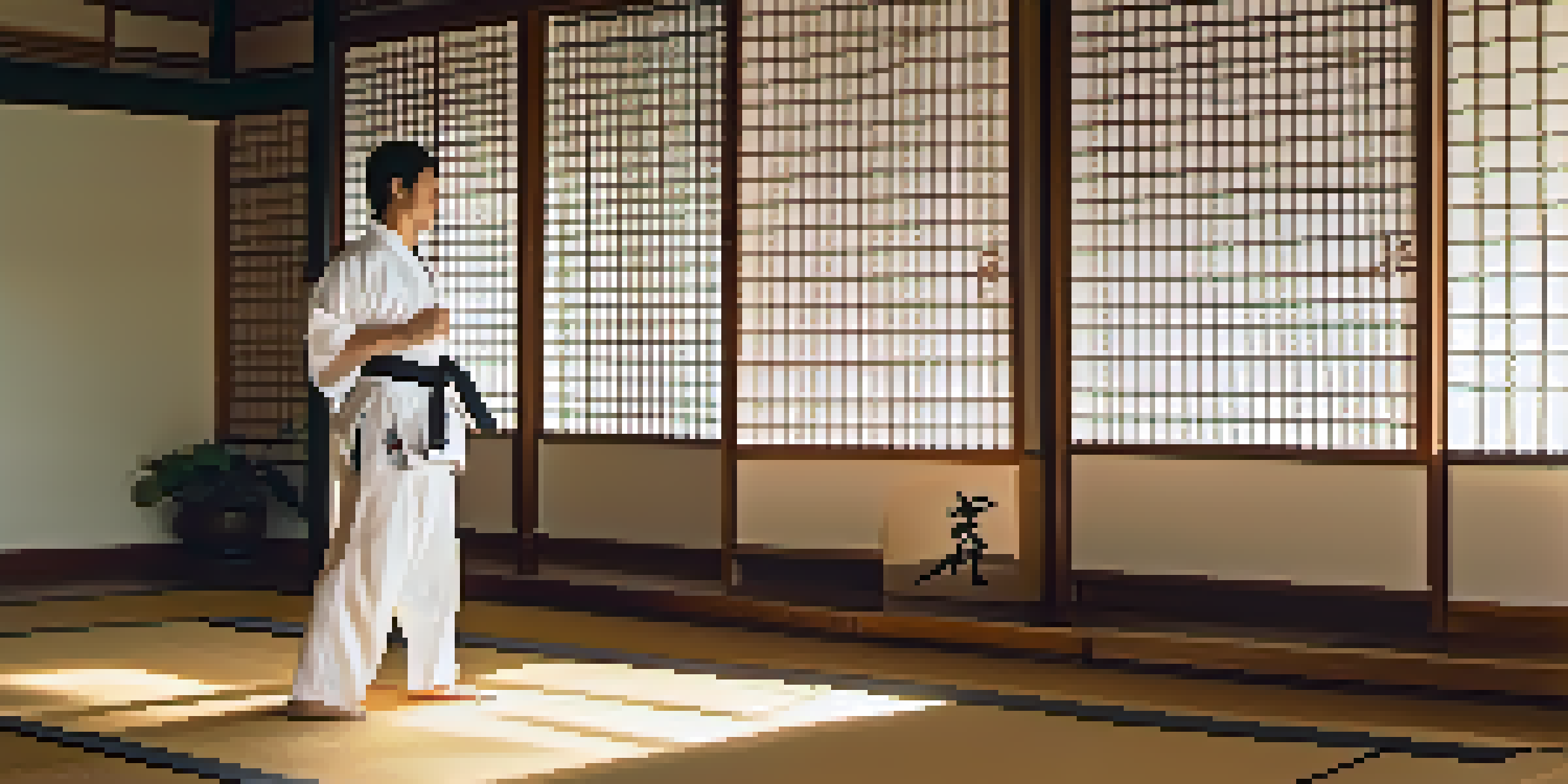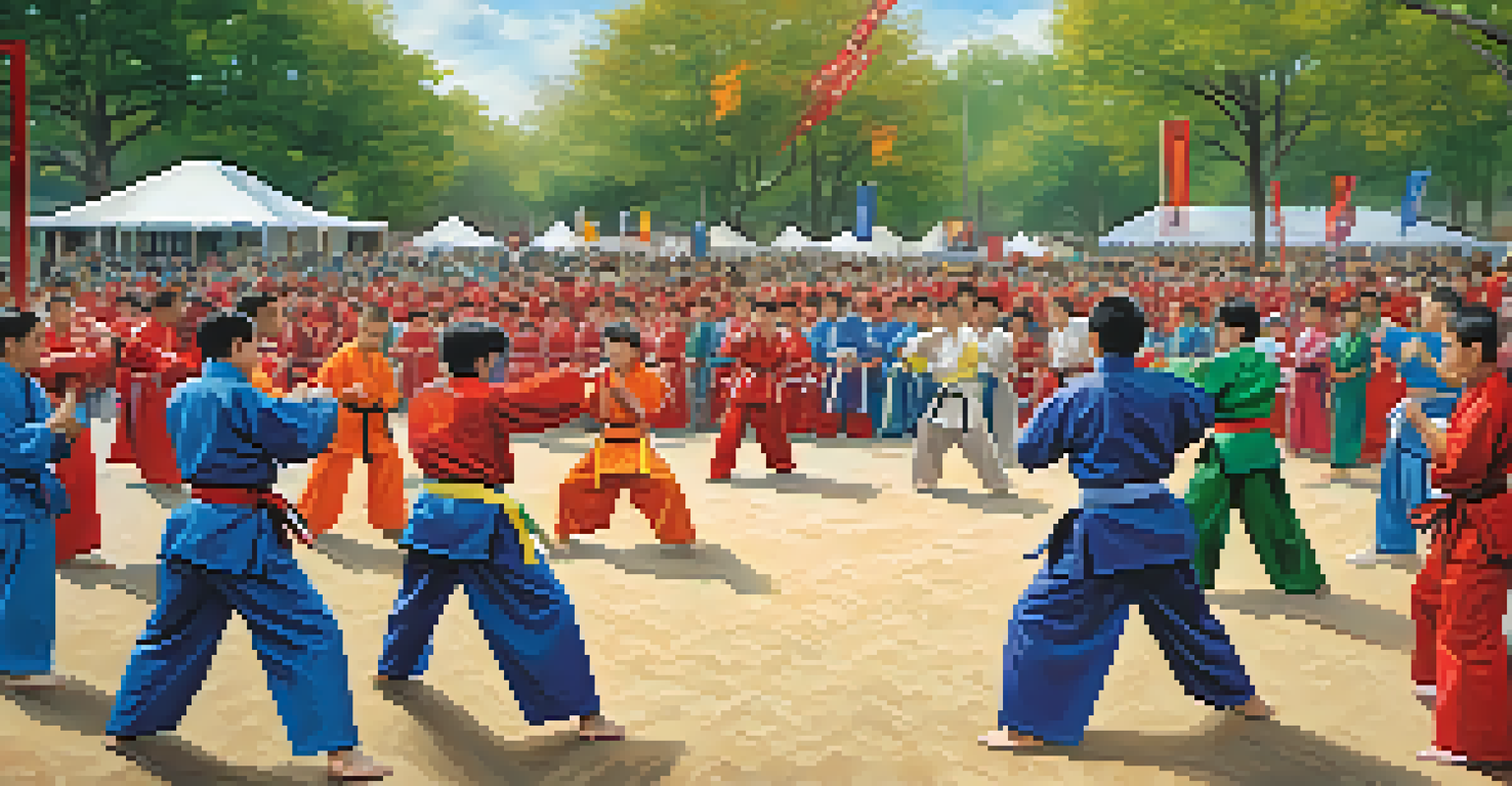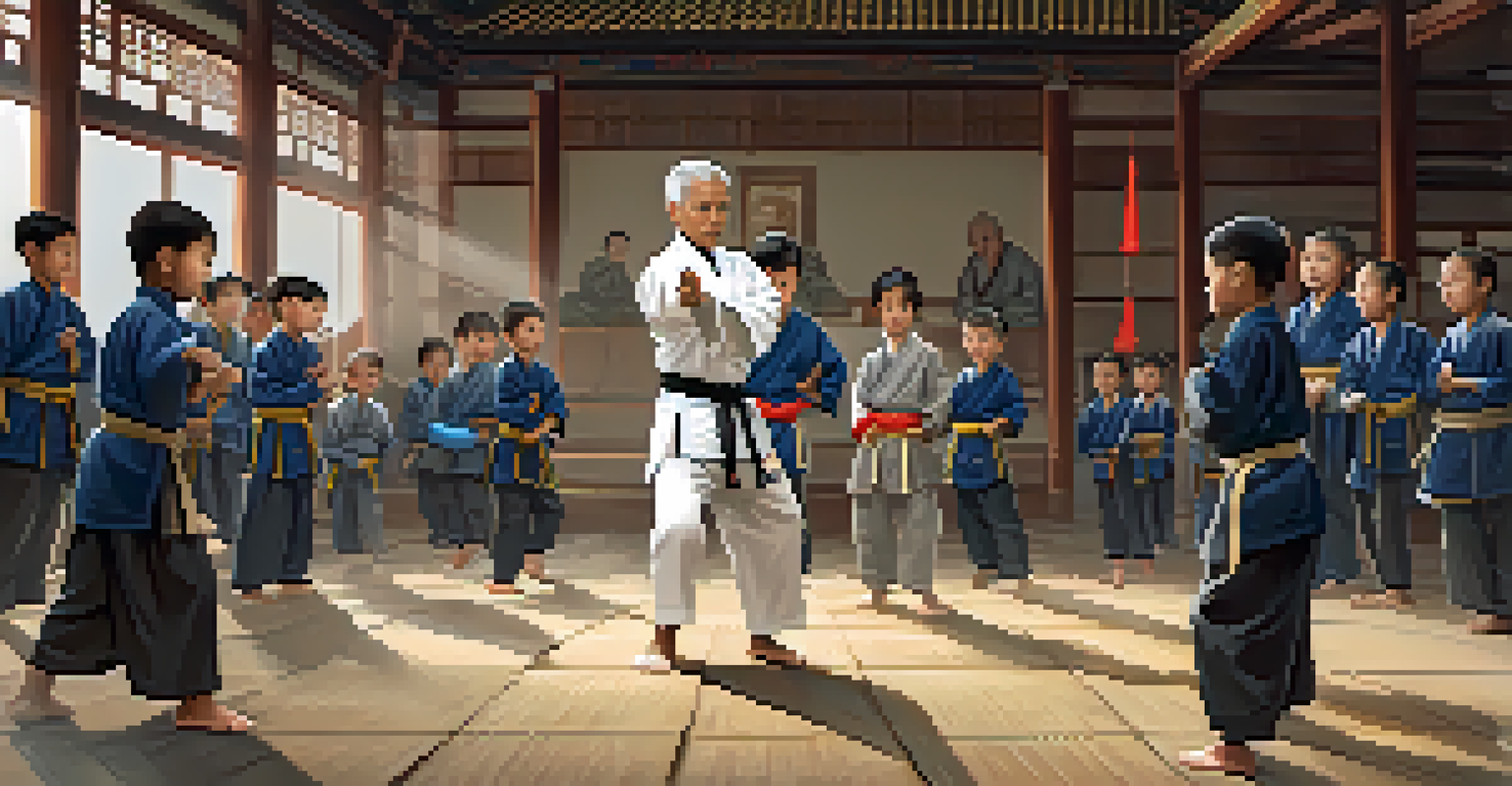The Role of Martial Arts in Preserving Cultural Practices

Understanding Martial Arts as Cultural Expressions
Martial arts are more than just physical techniques; they embody cultural expressions that reflect a community's values and beliefs. Each form, whether it's Karate from Japan or Capoeira from Brazil, tells a story of its origin, history, and evolution. By practicing these arts, individuals connect with their heritage and keep cultural narratives alive.
Martial arts are not just about fighting; they are about connecting with culture and heritage.
For example, Taekwondo incorporates elements of Korean history and philosophy, allowing practitioners to engage with their national identity. This connection fosters a sense of pride and belonging, as students learn not only the movements but also the stories behind them.
In essence, martial arts serve as a bridge between generations, allowing practitioners to honor their ancestors while adapting to modern society. This cultural continuity is crucial for community cohesion and identity preservation.
The Role of Traditional Practices in Martial Arts
Traditional martial arts often include rituals, music, and costumes that are integral to their practice. These elements help preserve the cultural context in which the martial art developed, allowing practitioners to experience a deeper connection to their roots. The attire worn during practices, for instance, often has historical significance, representing the art's lineage.

Moreover, many martial arts involve specific rituals, such as bowing to instructors or performing warm-up exercises that echo ancient practices. This adherence to tradition reinforces respect for the art and its history, creating a sense of continuity amidst change.
Cultural Significance of Martial Arts
Martial arts serve as cultural expressions that connect practitioners to their heritage and foster a sense of identity.
By engaging with these traditional practices, martial artists actively participate in preserving cultural heritage, ensuring that it remains relevant for future generations. This preservation is not just about maintaining techniques, but also about keeping the spirit of the culture alive.
Martial Arts as a Tool for Cultural Education
Martial arts schools often serve as cultural hubs, where students learn not only fighting techniques but also the history and philosophy behind the art. This educational aspect fosters a deeper understanding and appreciation of the culture, making it more than just a physical activity. For many, this journey into martial arts is the first step toward exploring a new culture.
The essence of martial arts lies in its ability to transmit values and traditions from one generation to the next.
Instructors play a crucial role in this educational process, often sharing stories and lessons that highlight cultural values such as respect, discipline, and perseverance. These teachings help students understand the significance of their practice within a broader cultural framework.
As students engage with the cultural narratives of their martial arts, they also develop a sense of responsibility to uphold these traditions. This awareness transforms martial arts into a lifelong learning experience that enriches both personal growth and cultural understanding.
Globalization and Its Impact on Martial Arts
With the rise of globalization, martial arts have spread far beyond their countries of origin, often adapting to new cultural contexts. While this globalization can lead to greater accessibility, it also poses challenges for cultural preservation. Many traditional practices may be diluted or altered to fit commercial interests, potentially losing their original meaning.
However, this global exchange can also foster cross-cultural connections, allowing practitioners to share their traditions with others. For instance, a Brazilian Jiu-Jitsu academy in the United States can become a melting pot of different cultures, where students from various backgrounds come together to learn.
Preserving Traditions Amid Globalization
Globalization presents both challenges and opportunities for martial arts, requiring a balance between cultural preservation and adaptation.
The challenge lies in balancing the preservation of authentic practices with the evolving nature of martial arts in a global context. By remaining mindful of cultural roots, practitioners can navigate this landscape and ensure that the essence of their martial arts remains intact.
Martial Arts in Community Building and Cultural Events
Martial arts often play a significant role in community events, festivals, and demonstrations, serving as a platform for cultural expression. These events can bring together diverse groups, fostering understanding and appreciation for different traditions. For instance, a local martial arts tournament may showcase various styles, highlighting the rich tapestry of cultural practices within the community.
Participating in such events allows martial artists to share their skills and cultural heritage with a broader audience, creating opportunities for dialogue and connection. This engagement helps strengthen community ties and promotes respect for cultural diversity.
Moreover, these gatherings often celebrate not only the martial arts but also the values they represent, such as teamwork, respect, and resilience. By emphasizing these ideals, martial arts can contribute to a sense of belonging and unity among practitioners and spectators alike.
Martial Arts and Intergenerational Knowledge Transfer
One of the remarkable aspects of martial arts is the way knowledge is passed down through generations. This intergenerational transfer is vital for preserving cultural practices, as senior practitioners impart their wisdom and experiences to younger students. This mentorship creates bonds that enrich the learning experience and reinforce cultural values.
For many martial artists, training with a master is not just about physical improvement; it's also about absorbing the rich history and philosophy that accompanies the art. These interactions help cultivate a sense of identity and continuity, ensuring that the cultural significance of the martial art is not lost.
Intergenerational Knowledge Transfer
The mentorship between senior practitioners and younger students is crucial for passing down the rich history and philosophy of martial arts.
As younger generations embrace these teachings, they become active participants in the preservation of their cultural heritage, carrying forward traditions that might otherwise fade away. This process of knowledge transfer is crucial for maintaining the integrity of martial arts as living cultural practices.
The Future of Martial Arts in Cultural Preservation
As the world continues to change, the future of martial arts in preserving cultural practices depends on the commitment of practitioners and instructors. Embracing technology and social media can enhance the visibility of traditional martial arts, allowing them to reach broader audiences while maintaining their core values. Online platforms can facilitate the sharing of knowledge, techniques, and cultural stories.
However, it is essential to approach this digital transformation with respect for the art's heritage. Practitioners must remain vigilant in preserving authenticity while adapting to new environments and audiences. This balance will ensure that traditional practices continue to thrive in an increasingly interconnected world.

Ultimately, the future of martial arts as a means of cultural preservation lies in the hands of its practitioners. By honoring their roots and sharing their experiences, they can keep the spirit of martial arts alive, ensuring that these rich cultural traditions endure for generations to come.